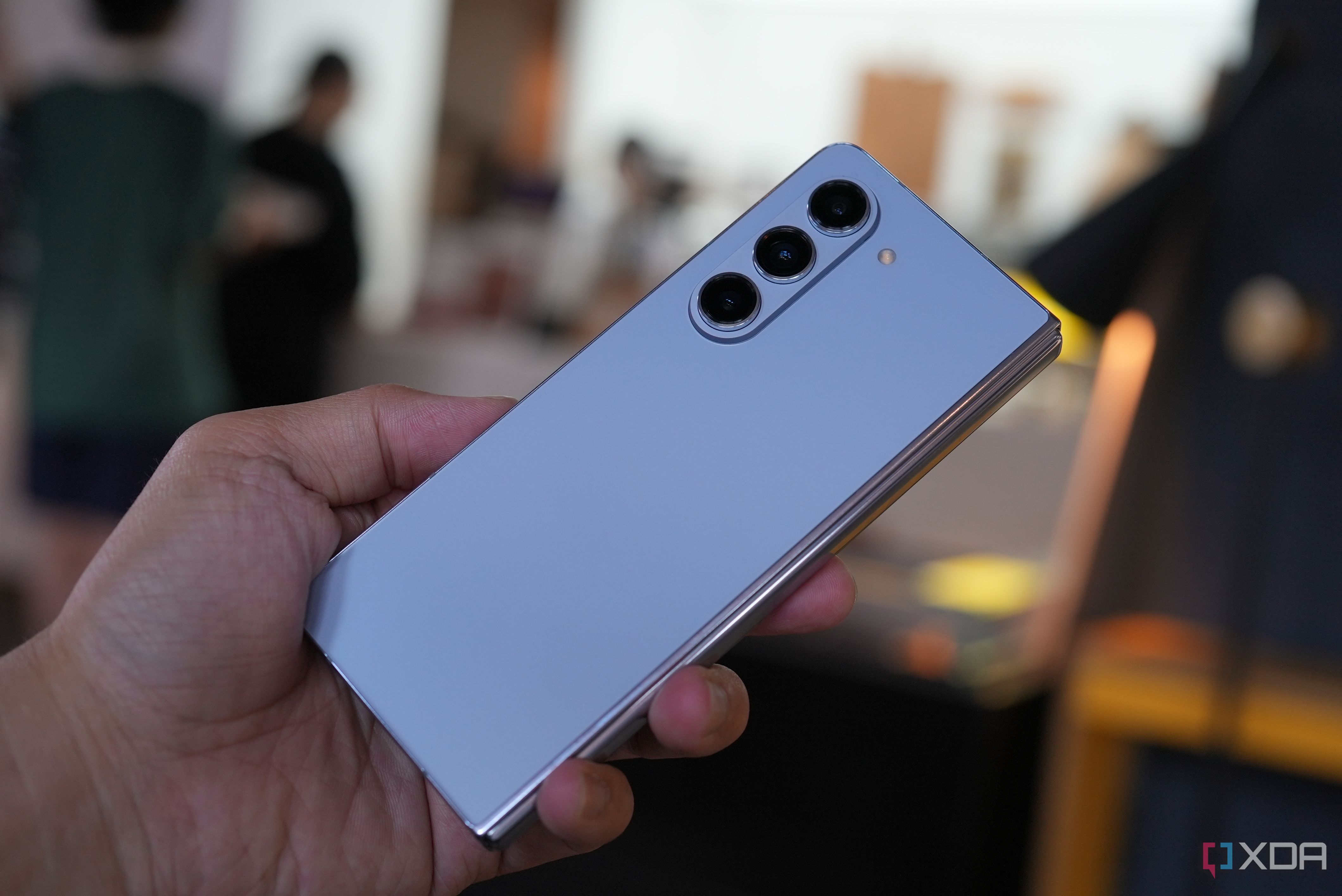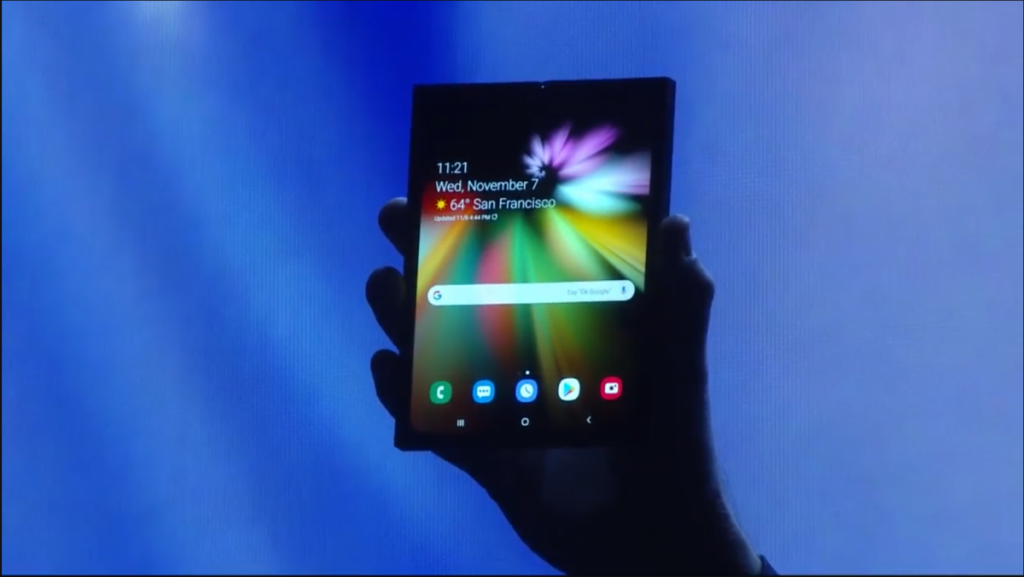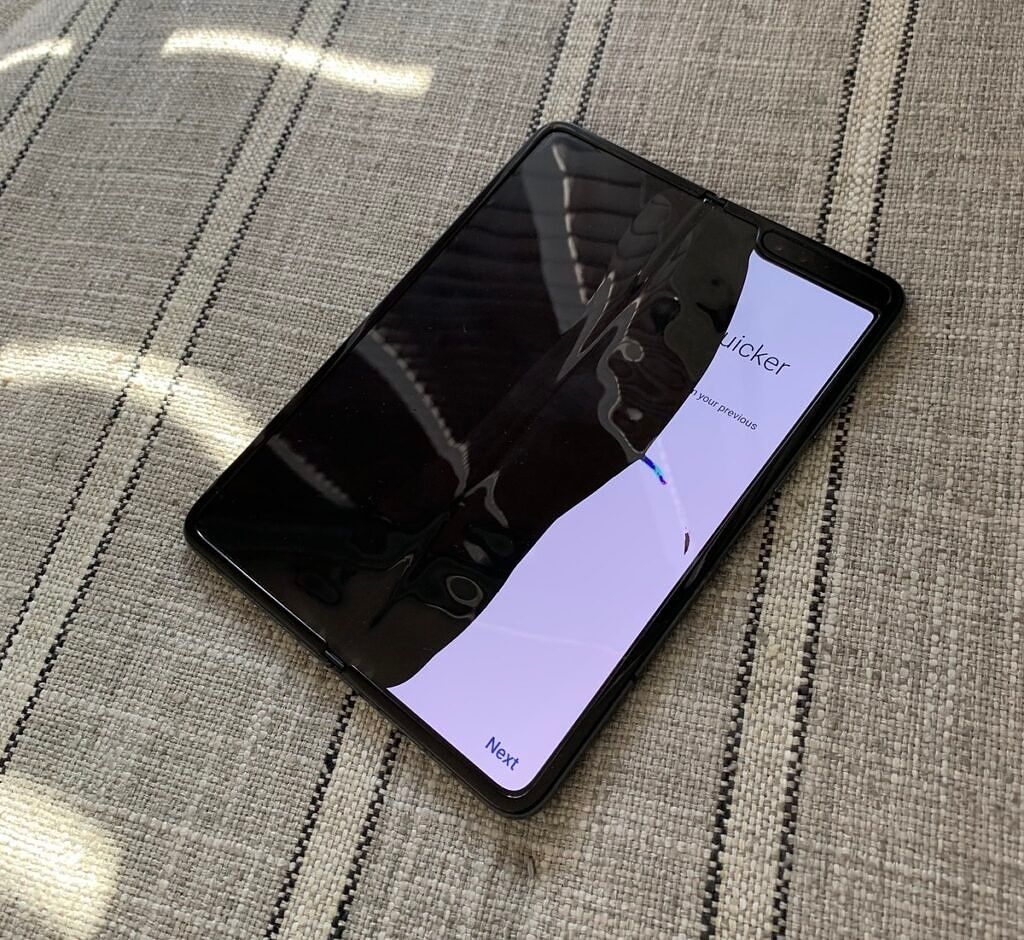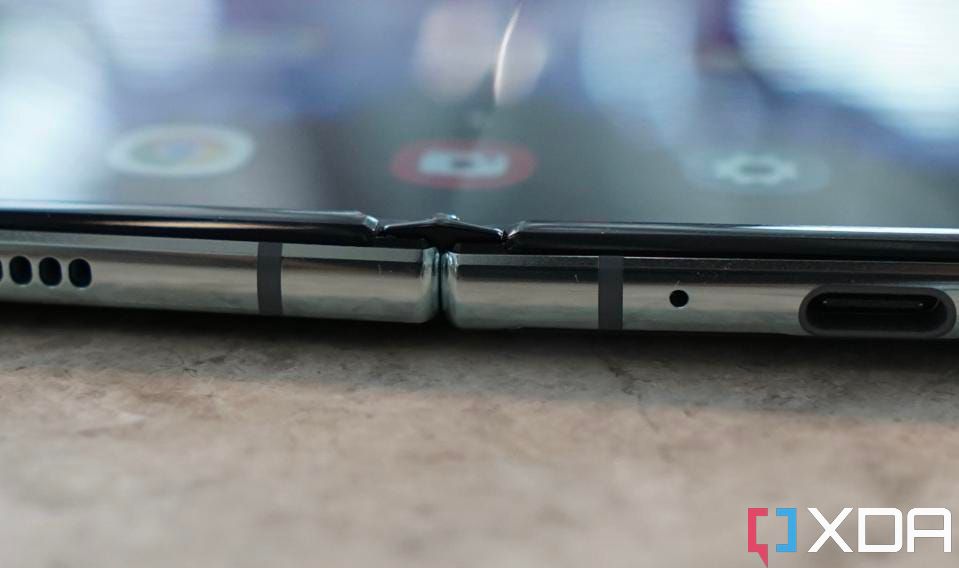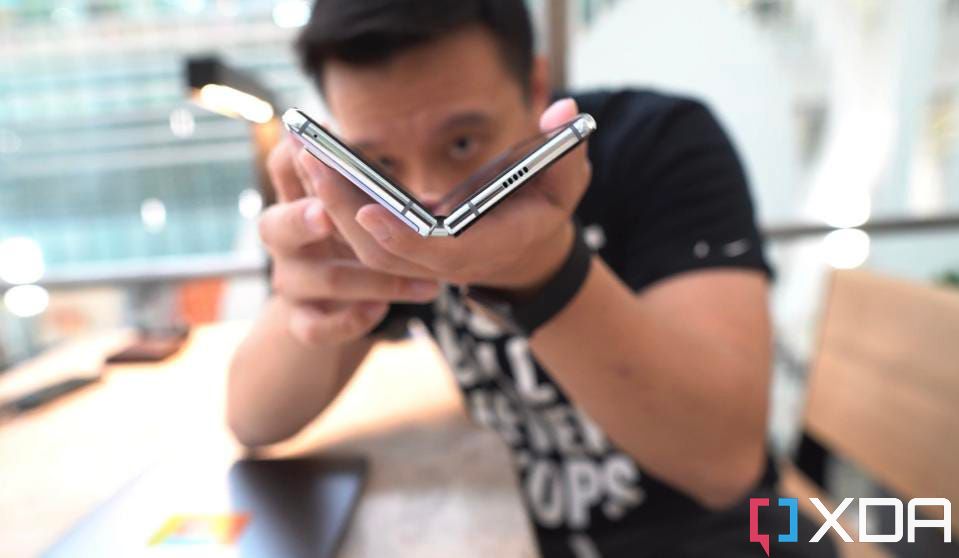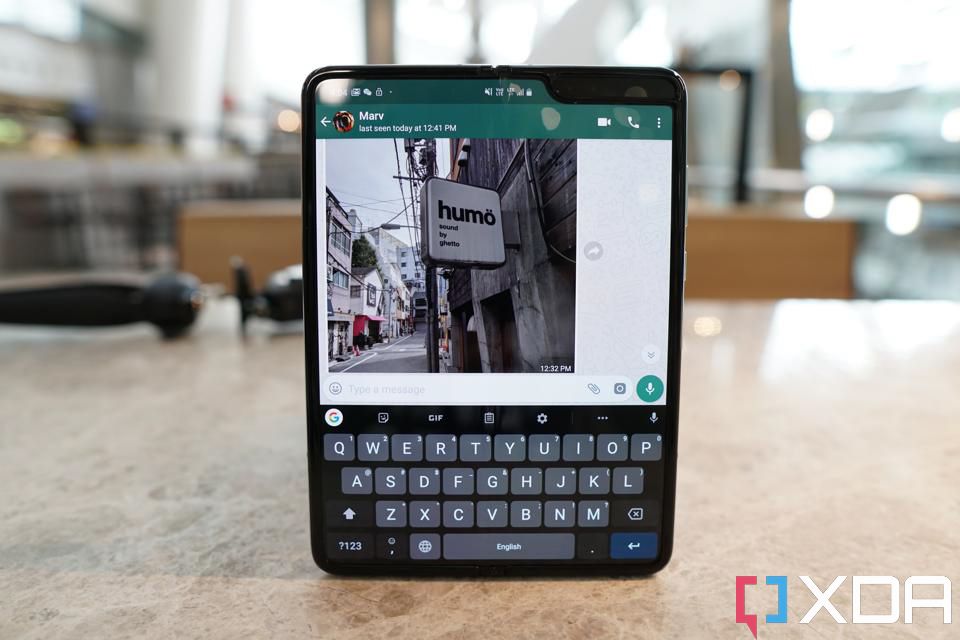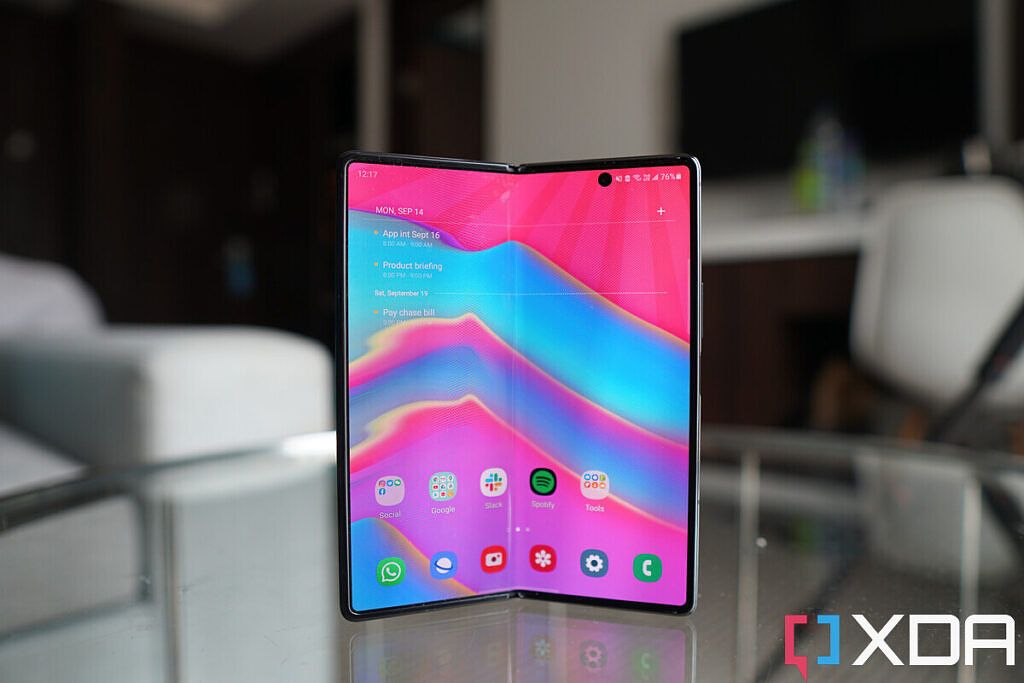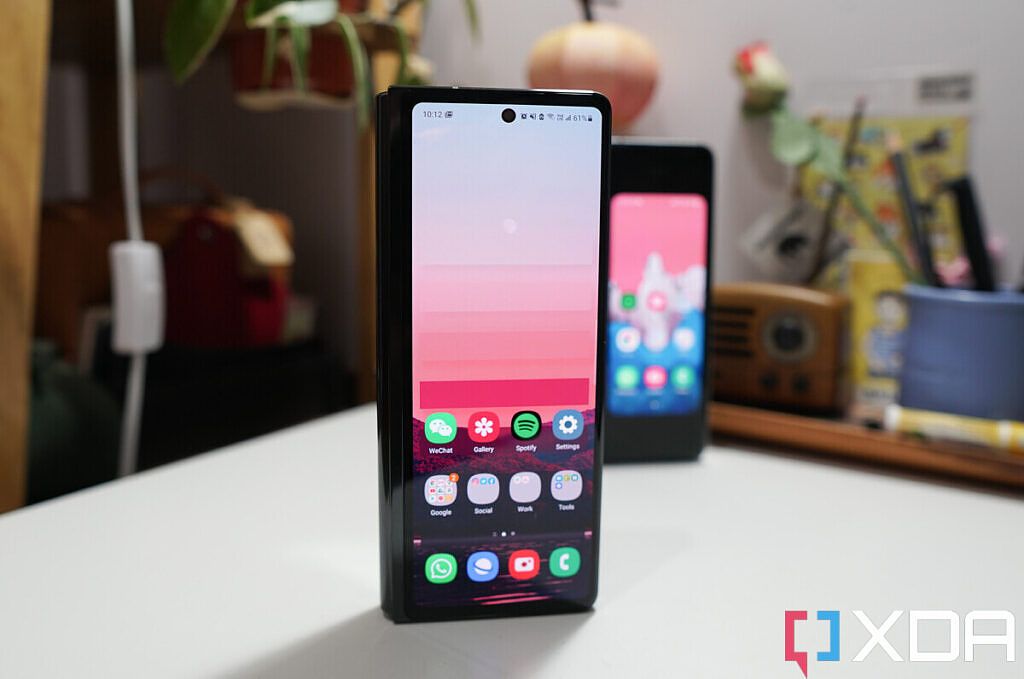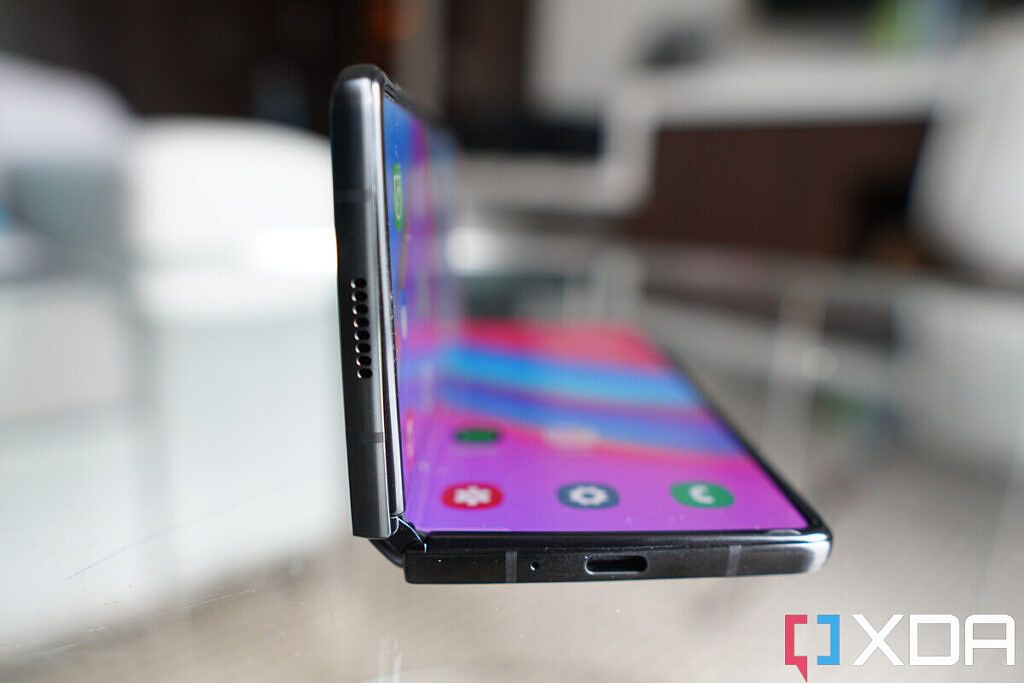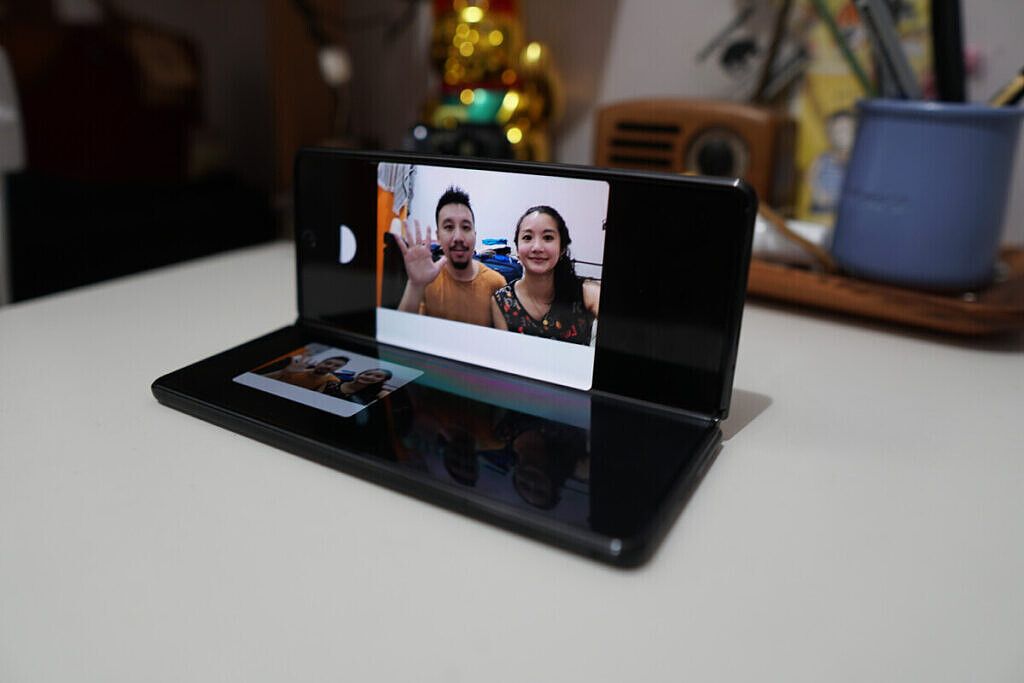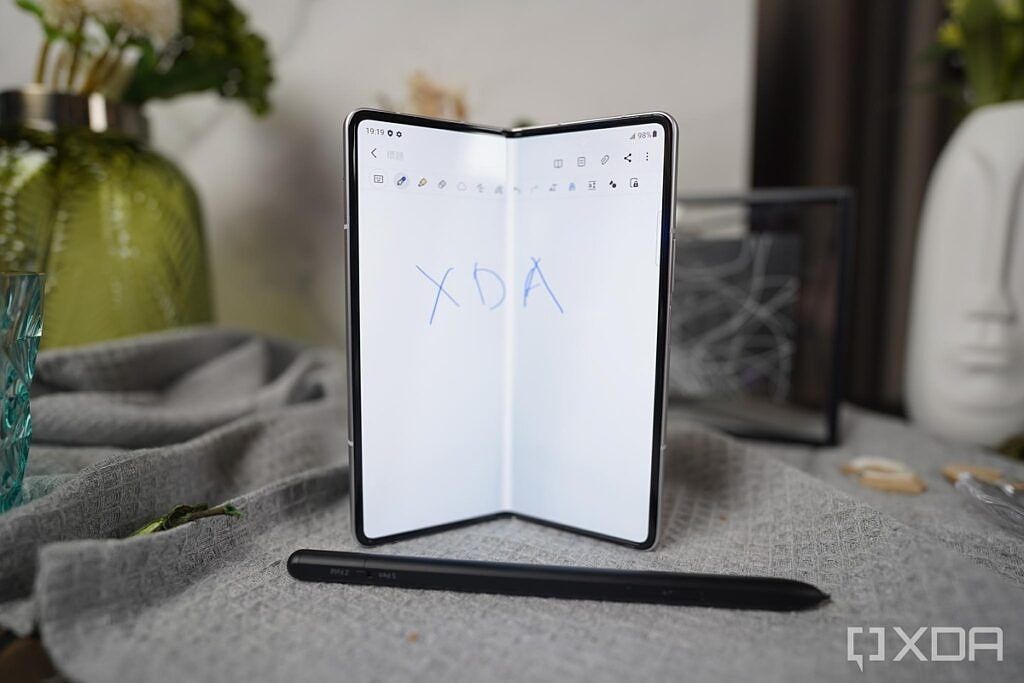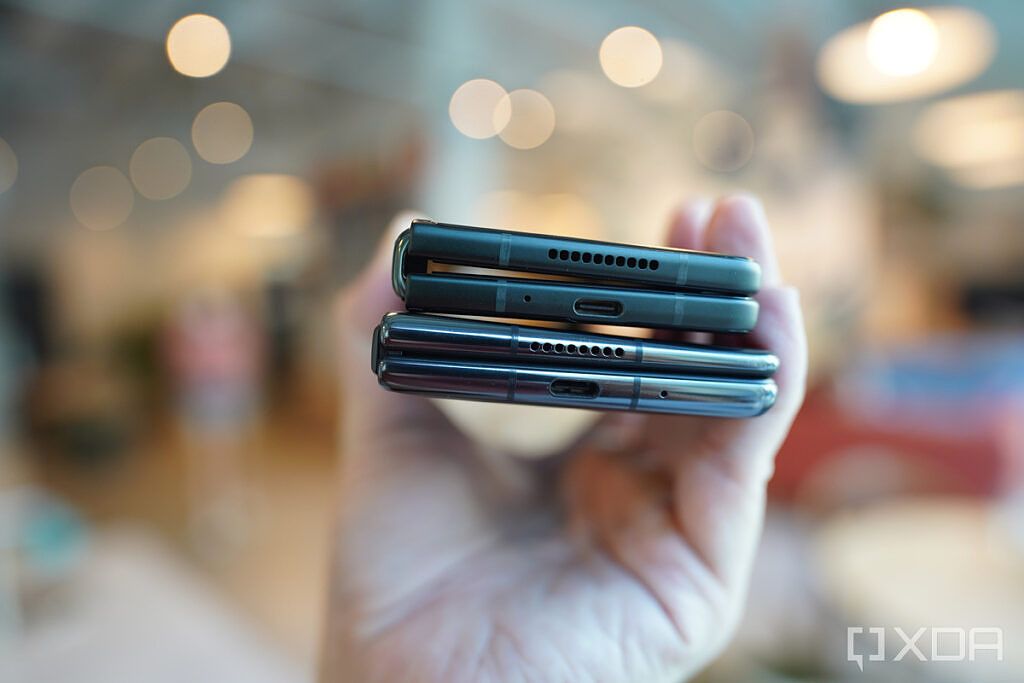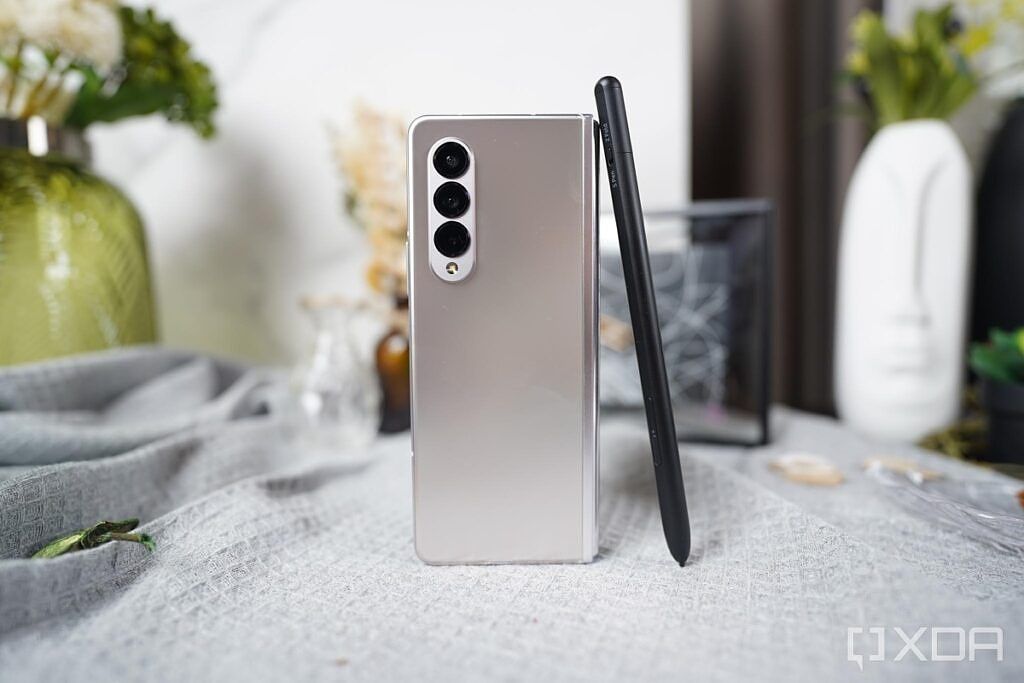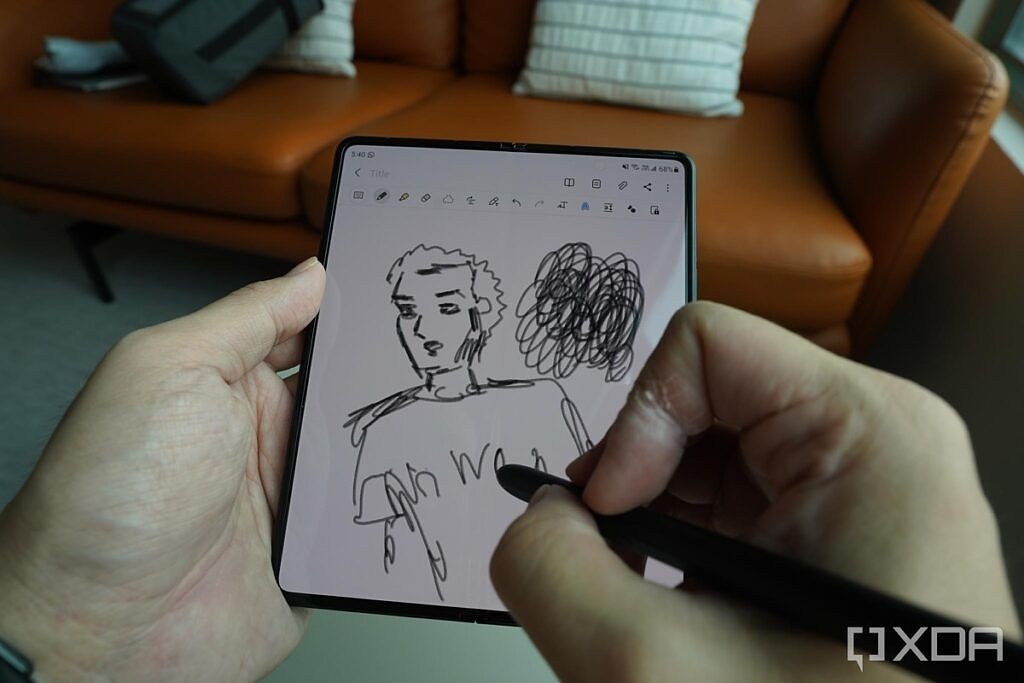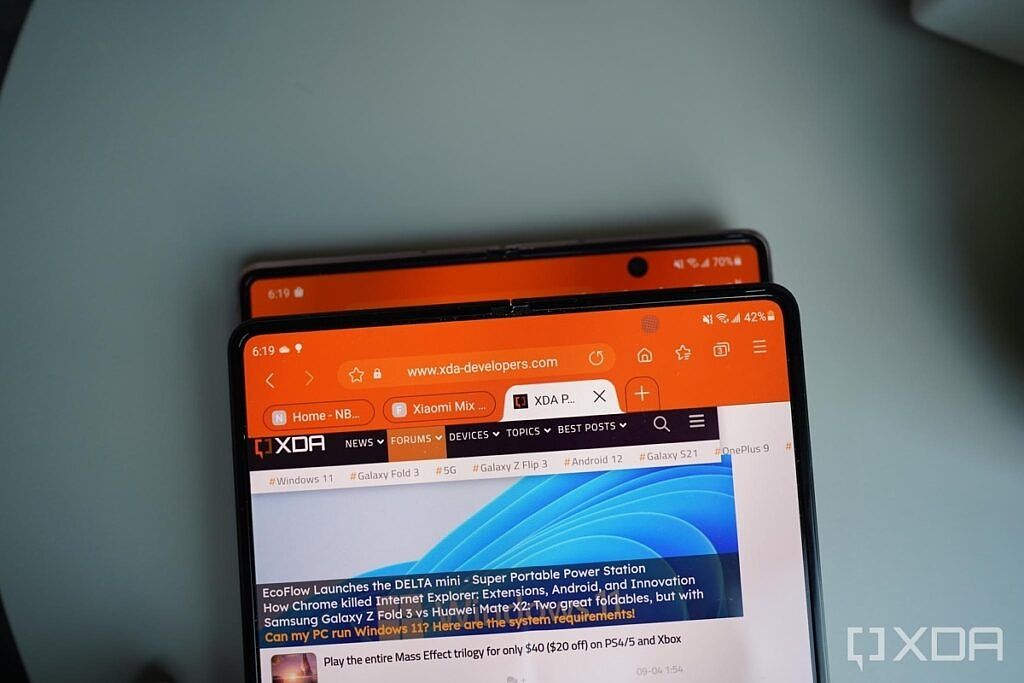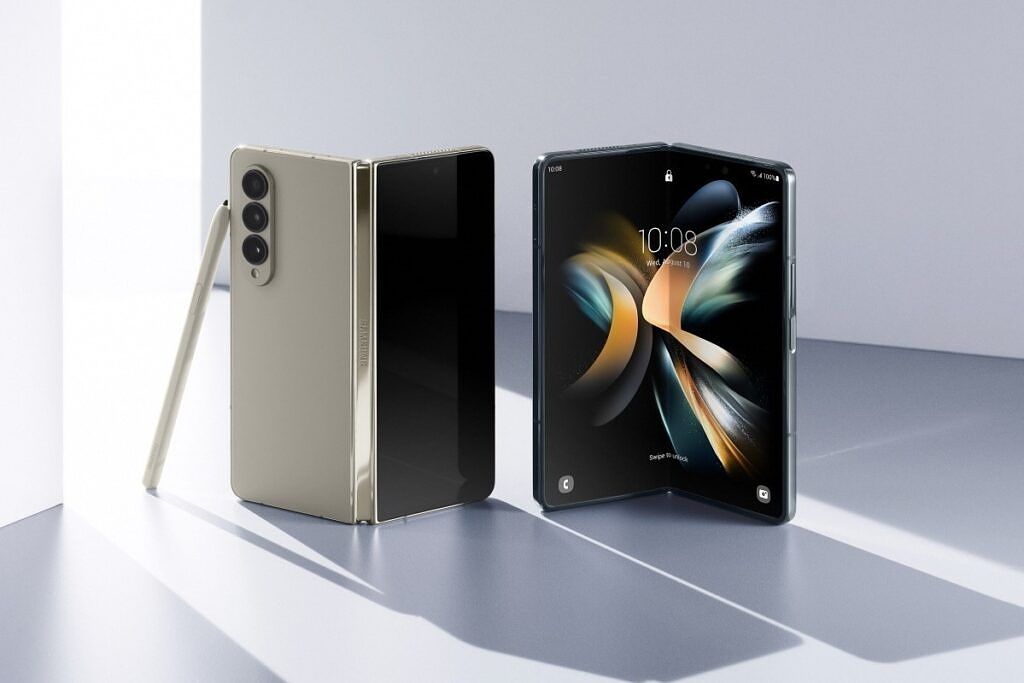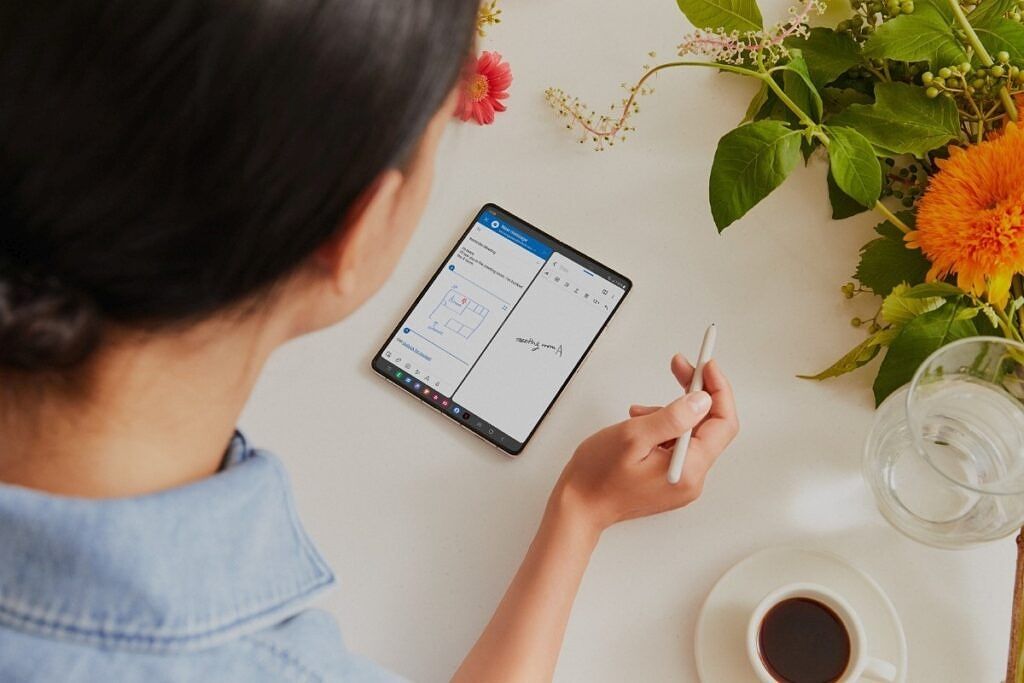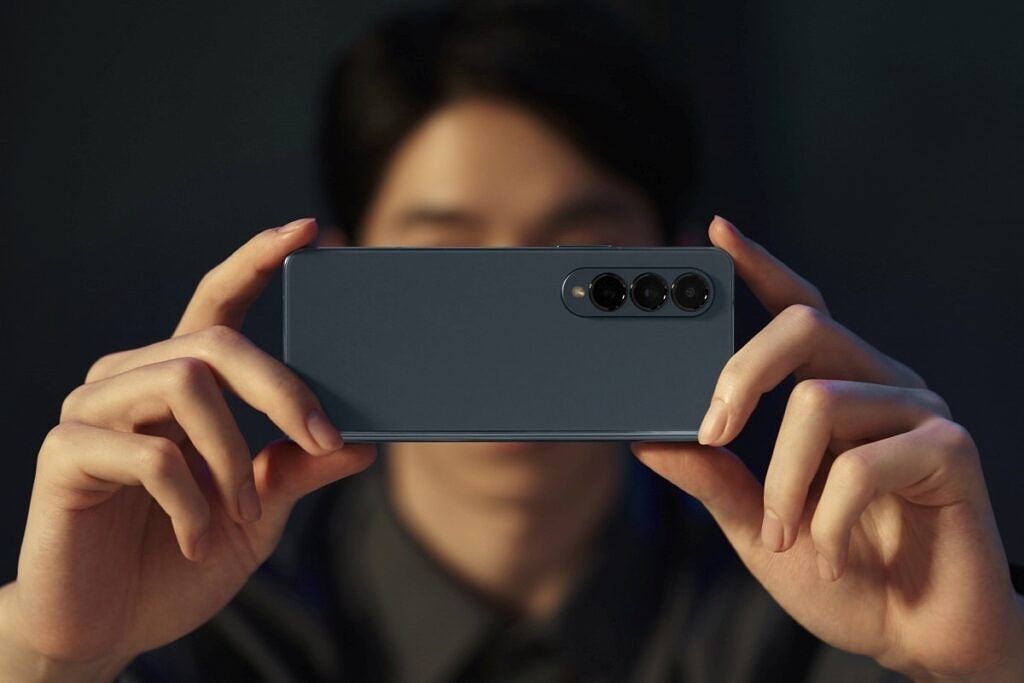Key Takeaways
- The Galaxy Z Fold 5 is an iterative upgrade with subtle improvements over its predecessor, including a narrower design and a lighter weight. It features a Qualcomm Snapdragon 8 Gen 2 chip and a 4,400mAh battery.
- While the improvements may not be major on their own, together they enhance the overall form-factor of the Galaxy Z Fold 5 and solidify its position as one of the best smartphones you can buy.
- The Galaxy Z Fold series has come a long way since its initial launch, evolving from a troubled start to now being the direction that mobile devices are heading, as demonstrated by the refinement and advancements in each generation.
The Galaxy Z Fold 5 is the latest entry in Samsung's foldable line-up this year. It's still a book-like inner foldable with basically the same design language as last year's foldable, so it looks very similar to the Galaxy Z Fold 4. It does, however, has a few changes that make it slightly better than its predecessor.
The Galaxy Z Fold 5 is a bit more compact than its predecessor, and it's also a few grams lighter. It is not a significant upgrade over the Galaxy Z Fold 4 in terms of the overall design, but it improves the form-factor further in more meaningful ways to ensure the Galaxy Z Fold 5 stays on top of the list of the best smartphones you can buy in 2023.
Can any of these improvements be considered major by themselves? No. But together they make up more than the sum of their parts. They further correct many aspects of the first Fold that, now in hindsight, look rather ridiculous.
I have used every Samsung foldable phone (heck, every foldable phone, period) over the years, and it's worth documenting the evolution of this series, because the Fold series went from nearly crashing and burning at takeoff to now, clearly the direction toward which mobile is heading.
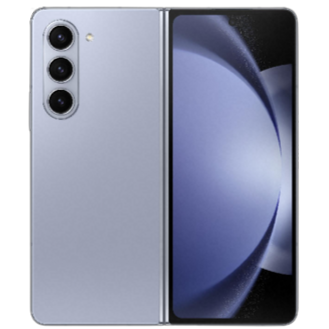
Samsung Galaxy Z Fold 5
Samsung's latest Galaxy Z Fold 5 is a further refinement of the Z Fold lineup. The smartphone looks similar to past Z Fold iterations, featuring a 7.6-inch main screen and a tall cover screen. On the inside, it's powered by a Qualcomm Snapdragon 8 Gen 2 chip and a 4,400mAh battery.
The Prototype
Samsung had been teasing a foldable phone since 2013, but it wasn't until late 2018 at the company's developer conference did a functional prototype actually appeared in the flesh. That unnamed prototype was only shown on a dimly lit stage from a distance, and no media actually got their hands on it. But even from afar, we can see that it clearly carried the same design language as the eventual Galaxy Fold (there was no Z branding yet) that first launched in April 2019.
Samsung Galaxy Fold (version 1): A disastrous beginning
If you followed mobile news at the time, you surely remember what happened during that initial launch: the early Galaxy Fold review units Samsung seeded to reviewers began malfunctioning within days of use. The problems all involved the foldable display showing dead pixels to various degrees. Reasons ranged from reviewers unknowingly removing the unremovable screen protector, to debris getting inside the moving parts of the phone. Whatever the case, this was a PR disaster for Samsung, and the South Korean tech giant quickly recalled all review units and delayed the initially planned 26 April 2019 launch date. Samsung was initially supposed to announce updated shipping dates "within weeks," but months passed without a word.
It would not be hyperbole to say that, at the time, it seemed like Samsung's foldable aspirations had died before even officially starting.
Galaxy Fold (version 2): Successful lift-off
After three months, Samsung finally announced in July 2019 that it had identified and fixed the problem, and the Fold would be released in September. The fixes include inserting micro brushes inside the hinge (like tiny brooms) and placing two plastic caps at the top and bottom of the folding point to prevent debris entry. The unremovable screen protector was also tucked into the bezel, so users couldn't unknowingly peel it off.
These fixes sound inconsequential and didn't exactly evoke confidence from the tech media or any reasonably cautious consumers. But nonetheless, there were crazy gadget enthusiasts who were still willing to take the financial risk and buy one. I was one of them, importing one from South Korea on day one at a marked-up price.
But kudos to Samsung, because those fixes did work. There were no widespread reports of the device malfunctioning throughout the Galaxy Fold's entire life cycle despite heavy scrutiny, and I used my unit daily for 13 months without issues.
It's funny seeing how enamored I was by the original Fold, because looking back, it was clearly a gen-one device lacking polish and refinement.
You know how when you watch movies that came out in the late 90s and early 2000s today, and the cell phones and laptops onscreen would look absolutely clunky and cheap-looking compared to the gadgets we have today? The Galaxy Fold, at just four years old, already feels that way, with huge bezels sandwiching the outside screen, an unsightly and unnecessary notch that eats into the main screen, and worst of all, a flimsy hinge that flops around mid-fold.
But the Galaxy Fold already got one thing very right: the inner fold design. By late 2019, there were already two other foldables in existence (the Huawei Mate X and Royole FlexPai), and both utilized outer folds in which the foldable display wraps around the screen in folded form. I tested both of those phones too, and I was never comfortable using them in the real world due to the fact the soft bendy screen was always exposed. The Galaxy Fold, meanwhile, felt much more secure, because the folding screen was protected when folded.
Even if the Galaxy Fold was expensive, and in hindsight carried unpolished hardware, it did live up to the promise of a tablet that can fold in half and fit into our pockets. And for a digital nomad like me who enjoys working on-the-go, the original Galaxy Fold was absolutely worth it. I was sold on the idea of foldables from day one.
Galaxy Z Fold 2: The biggest generation-to-generation jump in recent mobile history
If there's a constantly recurring theme in consumer tech, it's that gen one of a bleeding-edge new tech is usually very rough around the edges, and gen two is when we see a much more polished product. Even with that in mind, the Galaxy Z Fold 2 absolutely blew me away by how much it improved over the original Fold.
First of all, the comically cramped outside screen was no more, replaced by a cover display that spans edge-to-edge. Sure it was a bit awkwardly tall and skinny, but still significantly more usable than what we had before.
The main display also got rid of the ugly notch for a much less intrusive hole punch, but most importantly: the hinge was significantly improved. It felt much sturdier, requiring a bit more force to fold and unfold. And in an ingenious move, the hinge could stay still mid-fold at any angle, like a laptop hinge. Samsung called this "Flex Mode," and it opened up a myriad of new use cases.
The Galaxy Z Fold 2 brought the biggest generation-to-generation improvement in recent mobile history.
The Z Fold 2 could, for example, serve as its own tripod, allowing the cameras to take hands-free selfies, time-lapse videos, or video calls. I also used it as a mini laptop at times, with the keyboard displayed on the bottom half of the device.
The large foldable screen, too, got a material upgrade, now using an "ultra-thin glass" layer at the top that made the display feel a bit more like glass than the soft, plasticky feel of the first Fold display.
I loved every change Samsung made to its second generation Fold, with the exception of the addition of the pointless Z branding. In my opinion, Galaxy Fold and Galaxy Flip sound clean. Adding another random letter feels redundant. I wrote this in my review of the Galaxy Z Fold 2 at the time and I still believe it to be true: the Z Fold 2 brought the biggest generation-to-generation improvement in recent mobile history.
Galaxy Z Fold 3: Making the foldable more durable, practical and affordable
By the first half of 2021, the foldable competition had heated up in China, with Huawei, and Xiaomi introducing foldable phones. Huawei's Mate X2 in particular introduced a series of foldable hardware improvements that made the Z Fold 2 look a bit outdated. Huawei's foldable had a hinge that barely protruded from the side, folded flat without a gap, didn't have a hard display crease, and the camera system featured a 10X Periscope zoom lens.
Everyone assumed Samsung would incorporate all these improvements into the Galaxy Z Fold 3. After all, if Huawei could do it, surely Samsung could too.
But it didn't happen. The Galaxy Z Fold 3, released in August 2021, brought back mostly the same design as the Galaxy Z Fold 2, with the noticeable screen crease, bulky hinge, and modest camera hardware that was a far cry from Samsung's own Galaxy Ultra slab phone cameras. All the display measurements and dimensions are identical to the Z Fold 2.
No one but Samsung engineers would know for sure, but my theory is that Samsung didn't incorporate these crease and camera improvements to the Z Fold 3 not because Samsung lacked the technical ability, but because Samsung wanted to make its foldables more mainstream: instead of cramming the absolute latest cutting-edge components that would drive up cost and weight, Samsung would instead make the Fold more practical for mainstream consumers: more durable, lighter, and cheaper.
The Galaxy Z Fold 3 achieved all three. It was, along with the Z Flip 3 that launched at the same time, the first foldables to gain an official IP water-resistance rating; it weighed 10g less than the Z Fold 2, and its starting retail price was nearly $200 lower than the $2,000 price of the first two Folds. Samsung also added S-Pen support for the Galaxy Z Fold 3, giving reason to justify the larger display.
One controversial change that isn't necessarily an improvement is the switch to an under-display selfie camera for the main screen. This allowed the Z Fold 3's main display to appear uninterrupted, at least if you don't look too hard. Examine closer, and you'll see the under-screen technology doesn't quite hide the camera too well, and the quality of this 4MP selfie camera is quite mediocre. There is still a normal selfie camera on the outside screen for those who want higher-quality selfies. For me, this change doesn't matter much, but it was a divisive decision at the time.
For a gadget enthusiast like me who really like snapping photos, the Galaxy Z Fold 3's cameras felt outdated, and quite lacking compared to the camera systems offered by rival foldables. But I understand Samsung's decision: if it had crammed the Galaxy S21 Ultra's epic camera system into the Fold 3, the foldable surely would have weighed and cost more.
Galaxy Z Fold 4: Another iterative push to the mainstream
Four years later, we got the Galaxy Z Fold 4 with more subtle improvements. The hinge no longer sticks out as much, and it also improves the overall in-hand feel of the device. The outside cover display is also just a wee bit wider (2.7mm wider, to be exact), which gives the device a less narrow aspect ratio in folded form (it's now just about 23:9 compared to 24.5:9 previously). This change is subtle, but makes a difference, as I've always found the Z Fold 2 and 3 screens too narrow when folded.
The Z Fold 4's main display was also said to be 45% stronger than the Z Fold 3's screen thanks to sturdier film material plus the inclusion of Gorilla Glass Victus Plus. The battery size remained the same, but the new Qualcomm Snapdragon 8 Plus Gen 1 chip was noticeably more efficient, which gave the Z Fold 4 better battery life than ever. It also had support for fast-charging, albeit no charger inside the box, and it also had support for S-Pen support returns as well.
Samsung also upgraded the Z Fold 4's cameras, with a 50MP main shooter that offered four times more resolution than the Z Fold 3's main camera. These resolutions were used for pixel binning, which further improves light intake ability. The image sensor size was also larger, and the zoom lens also got a bump up to a 3X optical zoom lens that's identical to the same lens used by Samsung's Galaxy S22 series of phones. This was a step up from the 2X zoom lens seen in the previous few years.
While those were still not Samsung's absolute best camera hardware (it's missing the large sensor 108MP main camera and 10X Periscope zoom lens used in the S22 Ultra) the improvements were still much welcomed. Of course for a gadget geek like me, I wish Samsung had gone all out and given the Z Fold 4 the S22 Ultra camera system, but again, that would have driven up cost and weight significantly.
Galaxy Z Fold 5: More of the same
The Galaxy Z Fold 5 is yet another iterative upgrade in the Galaxy Fold lineup. In fact, the improvements are so subtle that you can call it the Galaxy Z Fold 4 with a better hinge and a new Snapdragon chipset. The hinge, however, makes the Fold 5 feel significantly better in hand. The device is slightly narrower than the Galaxy Fold 4, and it also weighs a few grams lighter. But that's where the differences end, and the Fold 5 starts to feel nothing more than an S upgrade. Not only does it have identical displays, but you also get the same set of cameras. The Snapdragon 8 Gen 2 chipset coupled with 12GB RAM paves the way for reliable performance, but there's nothing more to it than that.
Unlike the Galaxy Z Fold 4 and the Samsung foldable that came before it, the Galaxy Z Fold 5 faces fierce competition from other foldable phones on the market. The OnePlus Open stands as an excellent alternative to the Galaxy Z Fold 5 now, and it's also ready to purchase in the U.S. It is both cheaper and better in many ways than the Galaxy Z Fold 5, making it a no-brainer for those looking to buy a reliable book-style foldable phone. You can stop by Galaxy Z Fold 5 vs OnePlus Open comparison to learn more about the differences between these two phones.
The Galaxy Z Fold 5 is still worth considering, though, especially now when it's frequently discounted. Be sure to keep an eye on the best Galaxy Z Fold 5 deals to see if you can snag a good deal on it.

Samsung Galaxy Z Fold 5
Samsung's Galaxy Z Fold 5 is a further refinement of the Z Fold lineup. The smartphone looks similar to past Z Fold iterations, featuring a 7.6-inch main screen and a tall cover screen. On the inside, it's powered by a Qualcomm Snapdragon 8 Gen 2 chip and a 4,400mAh battery.
You can score up to $750 off with trade-ins at Samsung.com.

